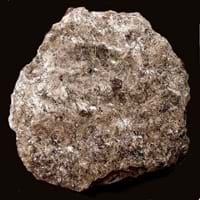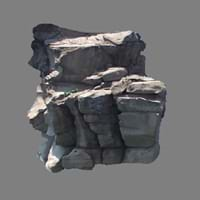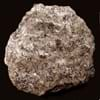Schist and Comendite
Definition
Definition
Schist is a medium grade metamorphic rock with medium to large, flat, sheet like grains in a preferred orientation
Comendite is a hard, peralkaline igneous rock, a type of light blue grey rhyolite
History
Origin
Unknown
Italy
Discoverer
Unknown
Unknown
Etymology
From French schiste, Greek skhistos i.e. split
Comendite derives its name from the area of Le Commende on San Pietro Island in Italy
Class
Metamorphic Rocks
Igneous Rocks
Sub-Class
Durable Rock, Medium Hardness Rock
Durable Rock, Hard Rock
Family
Group
Not Applicable
Volcanic
Other Categories
Coarse Grained Rock, Fine Grained Rock, Medium Grained Rock, Opaque Rock
Medium Grained Rock, Opaque Rock
Texture
Texture
Foliated, Platy
Porphyritic
Color
Black, Blue, Brown, Dark Brown, Green, Grey, Silver
Blue, Bluish - Grey
Maintenance
Less
Less
Durability
Durable
Durable
Water Resistant
Yes
Yes
Scratch Resistant
No
Yes
Stain Resistant
No
Yes
Wind Resistant
No
Yes
Acid Resistant
No
Yes
Appearance
Layered and Shiny
Foliated
Uses
Architecture
Interior Uses
Decorative Aggregates, Floor Tiles, Interior Decoration
Countertops, Decorative Aggregates, Interior Decoration
Exterior Uses
Garden Decoration, Paving Stone
As Building Stone, As Facing Stone, Garden Decoration
Other Architectural Uses
Not Yet Used
Curbing
Industry
Construction Industry
As Dimension Stone, Building houses or walls, Cement Manufacture, for Road Aggregate, Roadstone
Building houses or walls, Cement Manufacture, Construction Aggregate, for Road Aggregate, Landscaping, Making natural cement, Raw material for the manufacture of mortar
Medical Industry
Not Yet Used
Not Yet Used
Antiquity Uses
Artifacts
Artifacts
Other Uses
Commercial Uses
Used in aquariums, Writing Slates
Cemetery Markers
Types
Types
Mica Schists, Calc-Silicate Schists, Graphite Schists, Blueschists, Whiteschists, Greenschists, Hornblende Schist, Talc Schist, Chlorite Schist, Garnet Schist, Glaucophane schist.
Rhyolite
Features
Easily splits into thin plates, Smooth to touch
Very fine grained rock, It is One of the Oldest, Strongest and Hardest Rock
Archaeological Significance
Monuments
Not Yet Used
Not Yet Used
Famous Monuments
Not Applicable
Not Applicable
Sculpture
Not Yet Used
Not Yet Used
Famous Sculptures
Not Applicable
Not Applicable
Pictographs
Used
Not Used
Petroglyphs
Used
Not Used
Figurines
Not Yet Used
Not Yet Used
Fossils
Absent
Absent
Formation
Formation
Schist formed by dynamic metamorphism at high temperatures and pressures that aligns the grains of mica, hornblende and other elongated minerals into thin layers.
Comendite is a type of Igneous rock which is formed due to cooling and solidification of lava or magma. It may form with or without crystallization, either below the surface as intrusive rocks or on the surface as extrusive rocks.
Composition
Mineral Content
Alusite, Amphibole, Biotite, Chlorite, Epidote, Feldspar, Garnet, Graphite, Hornblade, Kyanite, Micas, Muscovite or Illite, Porphyroblasts, Quartz, Sillimanite, Staurolite, Talc
Albite, Amphibole, Quartz
Compound Content
CaO, Carbon Dioxide, MgO
Al, Fe, Potassium Oxide
Transformation
Metamorphism
No
Yes
Types of Metamorphism
Not Applicable
Cataclastic Metamorphism, Regional Metamorphism
Weathering
Yes
Yes
Types of Weathering
Biological Weathering, Chemical Weathering, Mechanical Weathering
Biological Weathering, Chemical Weathering, Mechanical Weathering
Erosion
Yes
Yes
Types of Erosion
Chemical Erosion, Coastal Erosion, Glacier Erosion
Coastal Erosion, Water Erosion
Properties
Physical Properties
Hardness
3.5-4
6-7
Grain Size
Medium to Fine Coarse Grained
Medium Grained
Fracture
Conchoidal
Pervasive
Streak
White
Bluish Black
Porosity
Highly Porous
Highly Porous
Luster
Shiny
Dull
Compressive Strength
Not Available
92.40 N/mm2
21
Cleavage
Slaty
Not Available
Toughness
1.5
2
Specific Gravity
2.5-2.9
2.38
Transparency
Opaque
Opaque
Density
2.8-2.9 g/cm3
Not Available
Thermal Properties
Resistance
Impact Resistant, Pressure Resistant, Water Resistant
Heat Resistant, Impact Resistant
Reserves
Deposits in Eastern Continents
Asia
Afghanistan, Bangladesh, Bhutan, China, India, Japan, Kazakhstan, Malaysia, Pakistan, Russia, Thailand, Turkey, Vietnam
China
Africa
Egypt, Ethiopia, Morocco, Nigeria, South Africa
East Africa
Europe
Austria, England, France, Georgia, Germany, Italy, Liechtenstein, Monaco, Norway, Slovenia, Spain, Sweden, Switzerland
Italy
Others
Not Yet Found
Not Yet Found
Deposits in Western Continents
North America
Canada, Costa Rica, Cuba, Mexico, Panama, USA
Not Yet Found
South America
Brazil, Colombia, Guyana
Not Yet Found
Deposits in Oceania Continent
Australia
New South Wales, New Zealand, Queensland
Queensland
All about Schist and Comendite Properties
Know all about Schist and Comendite properties here. All properties of rocks are important as they define the type of rock and its application. Schist belongs to Metamorphic Rocks while Comendite belongs to Igneous Rocks.Texture of Schist is Foliated, Platy whereas that of Comendite is Porphyritic. Schist appears Layered and Shiny and Comendite appears Foliated. The luster of Schist is shiny while that of Comendite is dull. Schist is available in black, blue, brown, dark brown, green, grey, silver colors whereas Comendite is available in blue, bluish - grey colors. The commercial uses of Schist are used in aquariums, writing slates and that of Comendite are cemetery markers.
|
||
|
||
|










